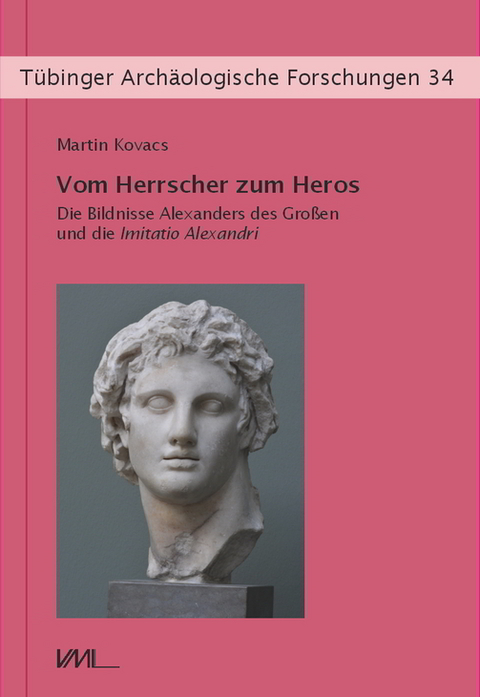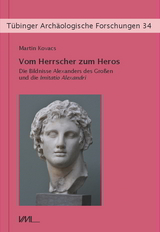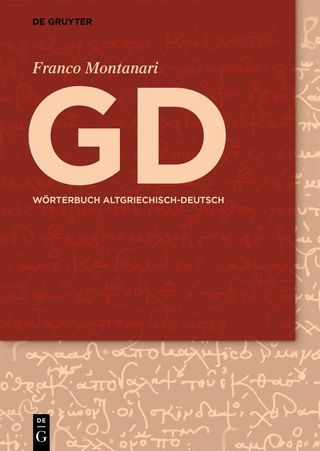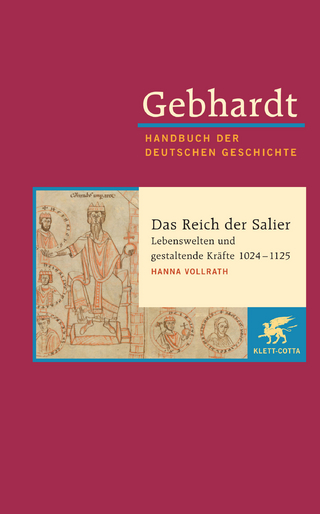Vom Herrscher zum Heros
Die Bildnisse Alexanders des Großen und die Imitatio Alexandri
Seiten
2022
|
1., Aufl.
VML Vlg Marie Leidorf (Verlag)
978-3-89646-865-9 (ISBN)
VML Vlg Marie Leidorf (Verlag)
978-3-89646-865-9 (ISBN)
Antiquity did not know only one image or only one idea of the figure of Alexander the Great. On the contrary, hardly any other historical figure of antiquity proved to be so divergent, controversial and literally multiform for contemporaries. The monograph seeks to grasp this diversity through a critical presentation of the representations of Alexander the Great, to reorganise the deleterious survivals and to make them useful for cultural-historical analysis. For this purpose, not only the round sculptures are taken into account, but also other media are consistently included: the coinage, large-scale monuments such as votives in greek sanctuaries, as well as the literary and epigraphic tradition. A decisive result is the finding that the figure of Alexander the Great could be restaged in different contexts either as a divinely or heroically impregnated being, as an energetic but potentially approachable general, or as a mythological figure with paradigmatic significance. These different conceptualisations will be elaborated on the basis of the highly divergent portrait designs between Hellenism, the Roman imperial period as well as Late Antiquity, recontextualised both historically and in terms of cultural history, and in particular asked about the role of the actors who commissioned the images in each case. This perspective counters a traditional conception of the image of Alexander, in which a rather selective perception has predominated up to now, with a preference for the lifetime portraits of Alexander. The study shows that divergent images of the Macedonian ruler were created at different times, in different places and in different political and cultural contexts, and that their specific iconography also reflects specific ideas of the figure of Alexander the Great. These figurations of Alexander in different cultural contexts illustrate the preferences of the actors who created them. For the imperial period in particular, it can be shown that Alexander was also visually staged as a mythological rather than a historiographical figure. The final analysis of the visual Imitatio Alexandri, the pictorial imitation of the Macedonian king in different historical and cultural contexts during the Hellenistic period, is based on the results obtained. Die Antike kannte nicht nur ein Bild oder nur eine Idee von der Gestalt Alexanders des Großen. Im Gegenteil: Kaum eine andere historische Figur der Antike erwies sich bereits für die Zeitgenossen als so divergent, umstritten und buchstäblich vielgestaltig. Diese Vielgestaltigkeit sucht die Monographie durch eine kritische Vorlage der Darstellungen Alexanders des Großen zu erfassen, die trümmerhafte Überlieferung neu zu ordnen und für die kulturgeschichtliche Analyse nutzbar zu machen. Hierfür werden nicht nur die rundplastischen Bildwerke berücksichtigt, sondern auch konsequent andere Medien einbezogen: die Münzprägung, großformatige Monumente wie Weihgeschenke sowie die literarische und epigraphische Überlieferung. Ein entscheidendes Ergebnis stellt die Feststellung dar, dass die Figur Alexanders des Großen in unterschiedlichen Zusammenhängen entweder als göttlich oder heroisch imprägnierter Übermensch, als energischer, aber potentiell nahbarer Feldherr, oder aber als mythologische Figur mit paradigmatischer Bedeutung neu inszeniert werden konnte. Diese unterschiedlichen Konzeptualisierungen werden auf der Grundlage der hochgradig divergierenden Bildnisentwürfe zwischen dem Hellenismus, der römischen Kaiserzeit sowie der Spätantike erarbeitet, sowohl historisch als auch kulturgeschichtlich rekontextualisiert, und dabei insbesondere nach der Rolle der Akteure, welche die Bilder jeweils kommissionierten, gefragt. Diese Perspektive steht einer traditionellen Vorstellung vom Alexanderbild entgegen, bei der bislang eine eher selektive Wahrnehmung unter Bevorzugung der lebenszeitlichen Bildnisse Alexanders überwog. Die Untersuchung zeigt, dass man sich zu verschiedenen Zeiten, an verschiedenen Orten, und in unterschiedlichen politischen und kulturellen Zusamenhängen divergierende Bilder vom Makedonenherrscher schuf, die in ihrer spezifischen Ikonographie auch spezifische Vorstellungen von der Figur Alexanders des Großen reflektieren. Diese Figurationen Alexanders in unterschiedlichen kulturellen Kontexten verdeutlichen die Präferenzen der aufstellenden Akteure. Gerade für die Kaiserzeit kann gezeigt werden, dass Alexander auch visuell eher als mythologische, und weniger als historiographische Figur inszeniert wurde. Auf den daraus erarbeiteten Ergebnissen fußt die abschließende Analyse der visuellen Imitatio Alexandri, die bildliche Nachahmung des Makedonenkönigs in unterschiedlichen historischen und kulturellen Zusammenhängen während des Hellenismus.
Antiquity did not know only one image or only one idea of the figure of Alexander the Great. On the contrary, hardly any other historical figure of antiquity proved to be so divergent, controversial and literally multiform for contemporaries. The monograph seeks to grasp this diversity through a critical presentation of the representations of Alexander the Great, to reorganise the deleterious survivals and to make them useful for cultural-historical analysis. For this purpose, not only the round sculptures are taken into account, but also other media are consistently included: the coinage, large-scale monuments such as votives in greek sanctuaries, as well as the literary and epigraphic tradition. A decisive result is the finding that the figure of Alexander the Great could be restaged in different contexts either as a divinely or heroically impregnated being, as an energetic but potentially approachable general, or as a mythological figure with paradigmatic significance. These different conceptualisations will be elaborated on the basis of the highly divergent portrait designs between Hellenism, the Roman imperial period as well as Late Antiquity, recontextualised both historically and in terms of cultural history, and in particular asked about the role of the actors who commissioned the images in each case. This perspective counters a traditional conception of the image of Alexander, in which a rather selective perception has predominated up to now, with a preference for the lifetime portraits of Alexander. The study shows that divergent images of the Macedonian ruler were created at different times, in different places and in different political and cultural contexts, and that their specific iconography also reflects specific ideas of the figure of Alexander the Great. These figurations of Alexander in different cultural contexts illustrate the preferences of the actors who created them. For the imperial period in particular, it can be shown that Alexander was also visually staged as a mythological rather than a historiographical figure. The final analysis of the visual Imitatio Alexandri, the pictorial imitation of the Macedonian king in different historical and cultural contexts during the Hellenistic period, is based on the results obtained.
Antiquity did not know only one image or only one idea of the figure of Alexander the Great. On the contrary, hardly any other historical figure of antiquity proved to be so divergent, controversial and literally multiform for contemporaries. The monograph seeks to grasp this diversity through a critical presentation of the representations of Alexander the Great, to reorganise the deleterious survivals and to make them useful for cultural-historical analysis. For this purpose, not only the round sculptures are taken into account, but also other media are consistently included: the coinage, large-scale monuments such as votives in greek sanctuaries, as well as the literary and epigraphic tradition. A decisive result is the finding that the figure of Alexander the Great could be restaged in different contexts either as a divinely or heroically impregnated being, as an energetic but potentially approachable general, or as a mythological figure with paradigmatic significance. These different conceptualisations will be elaborated on the basis of the highly divergent portrait designs between Hellenism, the Roman imperial period as well as Late Antiquity, recontextualised both historically and in terms of cultural history, and in particular asked about the role of the actors who commissioned the images in each case. This perspective counters a traditional conception of the image of Alexander, in which a rather selective perception has predominated up to now, with a preference for the lifetime portraits of Alexander. The study shows that divergent images of the Macedonian ruler were created at different times, in different places and in different political and cultural contexts, and that their specific iconography also reflects specific ideas of the figure of Alexander the Great. These figurations of Alexander in different cultural contexts illustrate the preferences of the actors who created them. For the imperial period in particular, it can be shown that Alexander was also visually staged as a mythological rather than a historiographical figure. The final analysis of the visual Imitatio Alexandri, the pictorial imitation of the Macedonian king in different historical and cultural contexts during the Hellenistic period, is based on the results obtained.
| Erscheinungsdatum | 31.05.2022 |
|---|---|
| Reihe/Serie | Tübinger Archäologische Forschungen ; 34 |
| Verlagsort | Rahden |
| Sprache | deutsch |
| Maße | 210 x 297 mm |
| Gewicht | 2900 g |
| Einbandart | gebunden |
| Themenwelt | Geschichte ► Allgemeine Geschichte ► Altertum / Antike |
| Schlagworte | Alexander der Große • griechisches Porträt • Hellenismus • Herrscherbild • Imitatio • Repräsentation |
| ISBN-10 | 3-89646-865-0 / 3896468650 |
| ISBN-13 | 978-3-89646-865-9 / 9783896468659 |
| Zustand | Neuware |
| Haben Sie eine Frage zum Produkt? |
Mehr entdecken
aus dem Bereich
aus dem Bereich
die Inszenierung der Politik in der römischen Republik
Buch | Hardcover (2023)
C.H.Beck (Verlag)
48,00 €
Buch | Hardcover (2024)
Klett-Cotta (Verlag)
50,00 €




